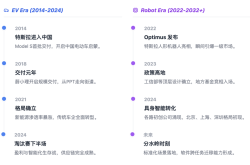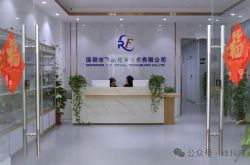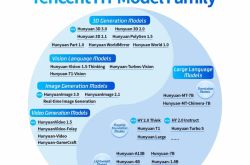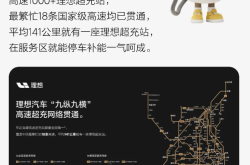Baidu's AI Long-term Vision Beyond Its Financial Report: A Quiet but Profound Value Reconstruction
![]() 08/21 2025
08/21 2025
![]() 649
649
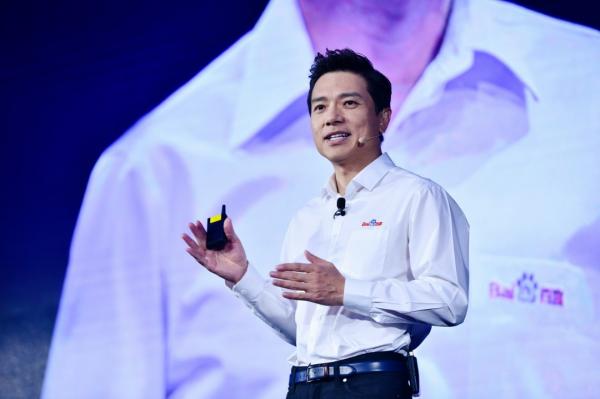
It's financial report season once again.
As Baidu announces revenues of 32.7 billion yuan and AI new business revenues surpassing 10 billion yuan, the market seems to reaffirm the triumph of long-term technological commitment. This is not merely a financial report; it is a strategic testament to over a decade of unwavering investment in AI. As I have consistently emphasized, genuinely valuable technological innovations are not fleeting fads but the quiet yet profound accumulation of strength.
In Baidu's financial report, the most noteworthy aspect is not the numbers but the industrial logic they reveal—AI transitioning from a technical concept to a commercial reality, evolving from single-point breakthroughs to ecological synergy. When Baidu Intelligent Cloud experiences a 34% year-on-year growth, Luobo Kuaipao's service frequency surges by 148%, and AI-generated content in search results rises to 64%, we witness not just a company's business progress but a paradigm shift in the AI industry's commercialization path.
I. AI-Driven Growth: From 'Technology Empowerment' to 'Value Creation'
The standout data in Baidu's financial report is that AI new business revenues, including intelligent cloud, surpassed 10 billion yuan for the first time, increasing its share in Baidu's core revenues from 28% to 38%. This figure signifies more than just a surface-level achievement; it marks the official transition of Baidu's AI business from the investment phase to the harvest phase, transforming from a cost center to a profit engine.
Robin Li's mentioned 'full-stack AI capabilities and end-to-end solutions' are demonstrating their compound advantages. While other cloud vendors are mired in price wars, Baidu Intelligent Cloud has achieved value breakthroughs through AI differentiation. IDC has ranked it first in the AI public cloud market for six consecutive years, a testament to the market's recognition of its technological depth. This recognition stems not from marketing jargon but from AI's tangible cost reduction and efficiency enhancement in real-world scenarios—as real as the 55 million GMV generated by Luo Yonghao's digital avatar in a single livestream.
More importantly, AI is restructuring Baidu's revenue structure. With traditional internet businesses nearing peak growth, the 38% share of AI new businesses indicates the formation of a second growth curve. This structural change is more valuable than mere scale growth, signifying a company's sustainable development and risk resistance.
II. The AI Rebirth of Search: A Strategic Resolve for Self-Revolution
What is most admirable is Baidu's AI transformation of search. Despite having a monthly active user base of 735 million, it dares to replace traditional hyperlink results with AI-generated content. This courage for self-revolution is rare in the internet industry. From April to July, the proportion of AI content on the mobile search results page soared from 35% to 64%, marking not just a technological iteration but a reconstruction of product philosophy.
In the short term, this radical reform may affect commercialization efficiency—AI answers often directly satisfy user needs more than traditional search ads, making it harder to insert commercial information. However, Baidu has chosen the path of 'making short-term concessions for long-term advantages,' requiring significant strategic resolve. As users grow weary of advertising bombardments, providing AI services that truly solve problems fosters deeper trust, eventually translating into more sustainable commercial value.
The deeper significance of AI-powered search lies in proving that traditional internet products can achieve value leapfrogging through AI. This is not a simple functional optimization but a paradigm shift from 'information connection' to 'knowledge service.' When search results evolve from 10 blue links to structured, intelligent, and multimodal AI answers, users receive solutions rather than information fragments. This experience transformation will redefine the competition rules in the search market.
III. Luobo Kuaipao's Global Breakthrough: The Inflection Point of Autonomous Driving Commercialization
Luobo Kuaipao provided 2.2 million rides in Q2, accumulating over 14 million rides. This data deserves scrutiny within the context of the entire autonomous driving industry. While global autonomous driving companies are still lingering in the demo stage, Baidu has achieved large-scale operations and global implementation, collaborating with Uber and Lyft to enter the Asian and European markets, and continuously expanding testing in Hong Kong's right-hand drive market.
More importantly, Luobo Kuaipao has validated the commercialization model of autonomous driving. With a 148% year-on-year increase in service frequency, it signifies that unit costs are declining as scale expands—precisely the critical inflection point for technology commercialization. The autonomous driving industry has witnessed too many 'technological myths' and 'commercial bubbles,' and Luobo Kuaipao's practice shows that only mileage accumulation and user payments on real roads can drive technological iteration and business closure.
Baidu began its autonomous driving layout in 2013, and after a decade of persistence, dawn is finally breaking. This long-term investment is not blind money-burning but steady progress along the path of 'technological research and development—scenario testing—commercial operations.' Now, this solid approach seems more sustainable than aggressive capital strategies. While others are still struggling with financing, Baidu has initiated global deployment through strategic partnerships, and this first-mover advantage will accelerate as scale expands.
IV. The Compound Effect of Full-stack Layout: Dimensionality Reduction Impact on the B-end Market
The continuous growth of Baidu Intelligent Cloud is essentially the best validation of its full-stack AI capabilities. The comprehensive layout at the chip level (Kunlun), framework level (PaddlePaddle), model level (ERNIE Bot), and application level (intelligent cloud solutions) forms a unique technological compound effect. This effect is particularly evident in the B-end market, where enterprise customers require not just single-point technology but end-to-end solutions.
While other cloud vendors are still integrating third-party AI capabilities, Baidu has achieved full-stack optimization from underlying chips to upper-layer applications. This vertical integration offers better performance experience and lower overall costs. As mentioned in the financial report, 'a positive cycle of technology and commerce'—self-developed technology brings differentiated advantages, and commercial landing feeds back into technological iteration. Once this flywheel effect is formed, it creates an insurmountable competitive barrier.
More importantly, full-stack capabilities allow Baidu to take the initiative in the era of large models. From ERNIE Bot to industry solutions, Baidu can provide full-link support from model training to inference deployment. This capability is invaluable in the transition from traditional IT clouds to AI clouds—enterprises need not just computing resources but AI-empowered business transformation. Baidu Intelligent Cloud's six consecutive years as the first in AI public clouds precisely prove the market's recognition of this full-stack value.
V. The Confidence in C-end Innovation: The Spillover Effect of AI Value Enhancement
Baidu's radical C-end innovations—digital avatars, intelligent agents, no-code development, etc.—are essentially a deep excavation of AI technology's value. The success of Luo Yonghao's digital avatar livestream is not just a marketing event but proof of AI digital avatars' feasibility in commercial scenarios. When digital avatars can generate real GMV, this technology ceases to be a laboratory toy and becomes a new productivity tool.
Products like GenFlow 2.0 and Miaoda demonstrate AI's ability to lower the technological threshold. By combining no-code with AI, they enable ordinary developers to build intelligent applications. This democratization of AI is crucial for technological popularization. Baidu's investments in these areas may seem scattered but are centered around the same core: making AI technology more user-friendly, inclusive, and value-oriented.
Behind these innovations is the confidence provided by Baidu's AI new businesses—when AI has proven to generate tens of billions of yuan in revenue, companies have more courage to explore cutting-edge applications. This virtuous cycle of technological and commercial confidence is the ideal innovation state for technology companies.
Conclusion
Looking at Baidu's financial report, the most impressive aspect is not a single-point breakthrough but the synergy effect of its AI strategy across various business segments. AI-powered search enhances user experience, intelligent clouds empower enterprise transformation, Luobo Kuaipao reshapes travel modes, and digital avatars innovate content forms—these seemingly independent advancements collectively construct a complete AI ecosystem.
In this ecosystem, technological research and development, product innovation, and commercial landing form a positive cycle. Baidu has invested in AI research and development for over a decade, from deep learning to autonomous driving, from large models to intelligent clouds, always steadfastly advancing along the main technological channel. Now, this persistence seems to be reaping compound returns: not just numerical financial growth but also structural upgrading and value reconstruction of the industry.
While the industry debates the AI business model, Baidu's financial report provides an answer: AI commercialization is not an overnight explosion but a gradual release of value. It requires the patience for technological accumulation, the courage for scenario landing, and the wisdom for ecosystem construction. The most positive significance of this financial report lies in proving that China's AI industry not only has the ability to achieve technological breakthroughs but also the capability to achieve commercial success.
The long-term vision of AI will eventually receive the gift of time. Baidu's practice shows that when companies are willing to invest resources in truly important technological research and development and focus their strategies on long-term value creation, commercial returns will naturally follow. This is an important revelation for the entire technology industry: beyond chasing trends, it is more important to adhere to the original intention of technology and the essence of commerce.
As I have always believed, the value of technology lies not in the novelty of concepts but in the changes it brings to the real world. Baidu's financial report shows us that such changes are happening.

